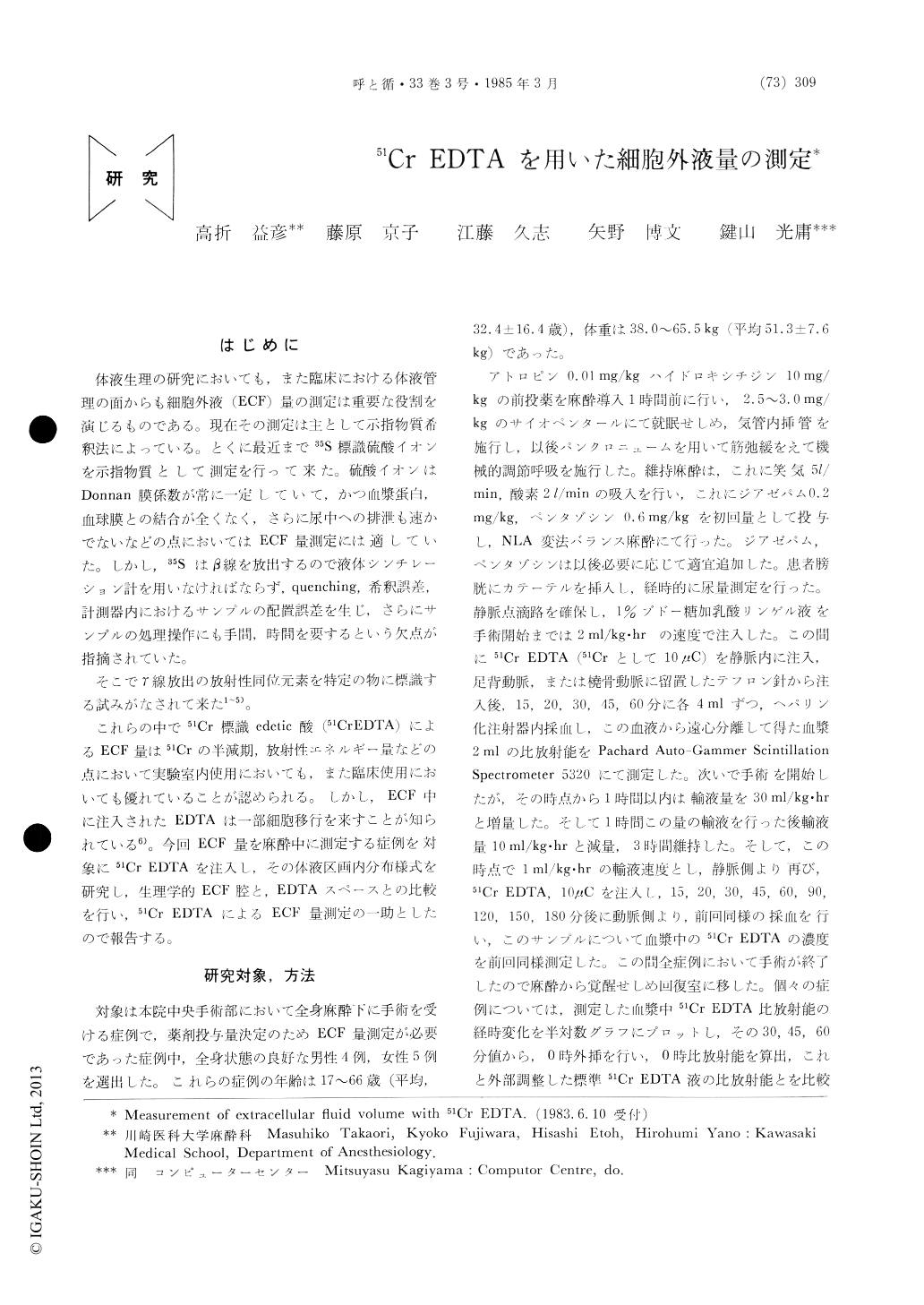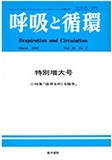Japanese
English
- 有料閲覧
- Abstract 文献概要
- 1ページ目 Look Inside
はじめに
体液生理の研究においても,また臨床における体液管理の面からも細胞外液(ECF)量の測定は重要な役割を演じるものである。現在その測定は主として示指物質希釈法によっている。とくに最近まで35S標識硫酸イオンを示指物質として測定を行って来た。硫酸イオンはDonnan膜係数が常に一定していて,かつ血漿蛋白,血球膜との結合が全くなく,さらに尿中への排泄も速かでないなどの点においてはECF量測定には適していた。しかし,35Sはβ線を放出するので液体シンチレーション計を用いなければならず,quenching,希釈誤差,計測器内におけるサンプルの配置誤差を生じ,さらにサンプルの処理操作にも手間,時間を要するという欠点が指摘されていた。
そこでγ線放出の放射性同位元素を特定の物に標識する試みがなされて来た1〜5)。
To establish an accurate determination of Eel,volume, 51Cr EDTA was injected intraveously in 9 healthy patients undergone minor surgery and then its concentration in the plasma was measured serially. An information criterion was used to analyze body fluid compartments which 51Cr EDTA should distribute and non-linear parameter estima-tion was applied to obtain an approximating equation for changes of 51Cr EDTA concentration after the injection. Previous data were recomfirmed that 51Cr EDTA would distribute in the intravas-cular, the ECF space, in the partial intracellular space, and the extrarenal space (urine). Even distribution of 51Cr EDTA would be estimated to be completed in the ECF space within 24 minutes and in the intracellular fluid space within 64 minutes.
EDTA space was estimated to be 1.41 times greater than the physiological ECF space. Our data supported that "O" time concentration of 51Cr EDTA in the ECF could be obtained by an extrapolating method from 51Cr EDTA concen-trations in plasma between 30-60 minutes after the single injection.

Copyright © 1985, Igaku-Shoin Ltd. All rights reserved.


